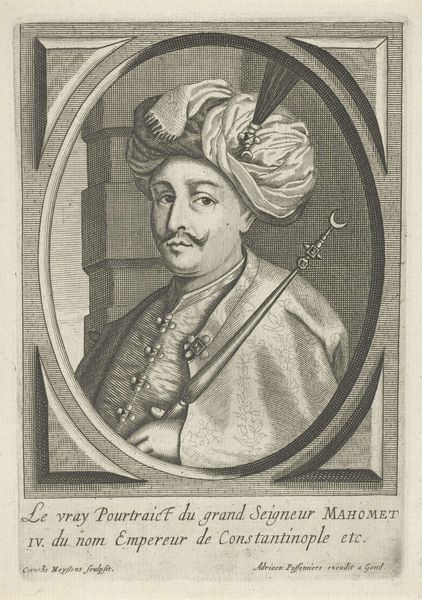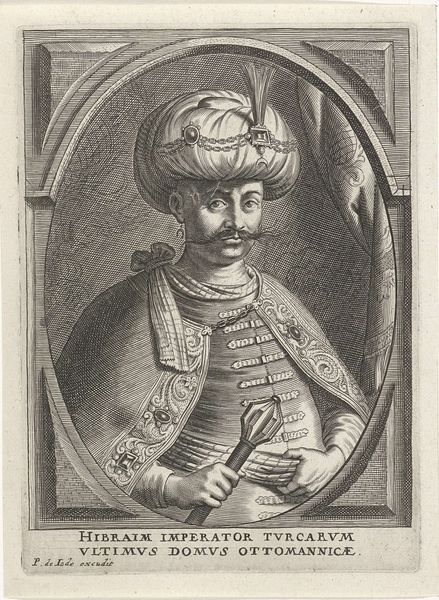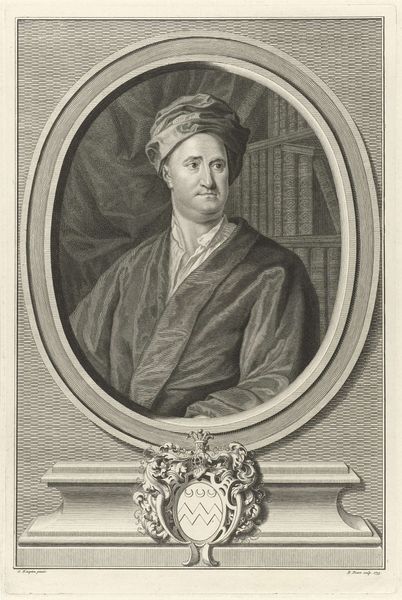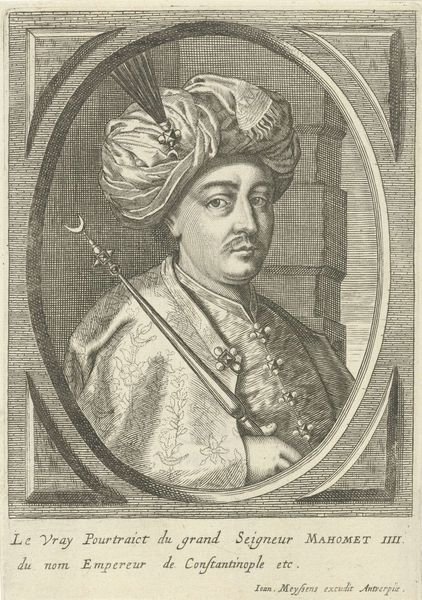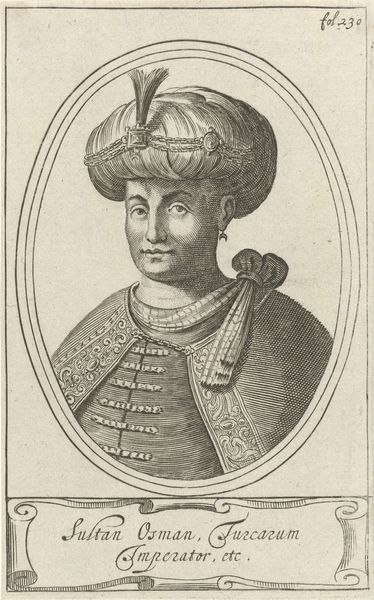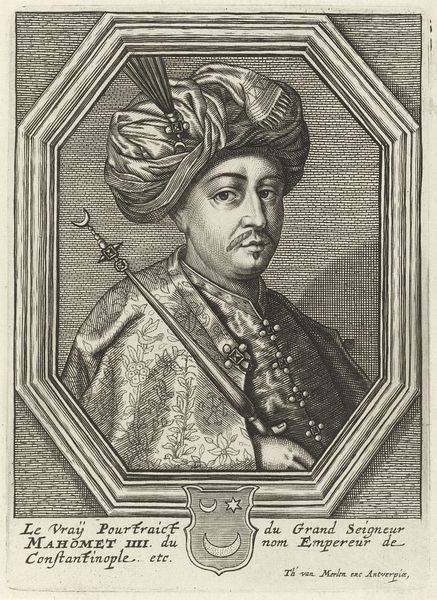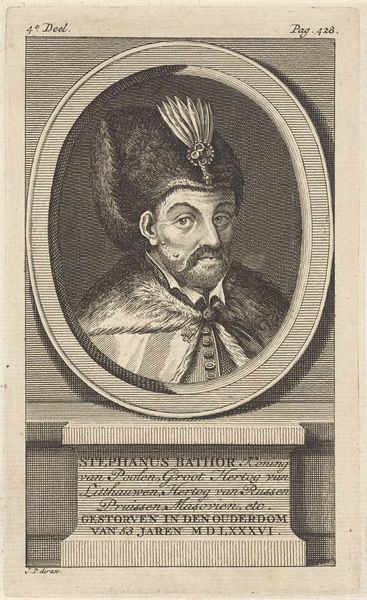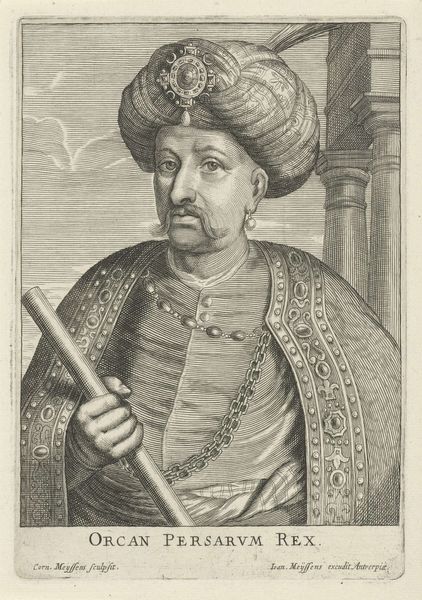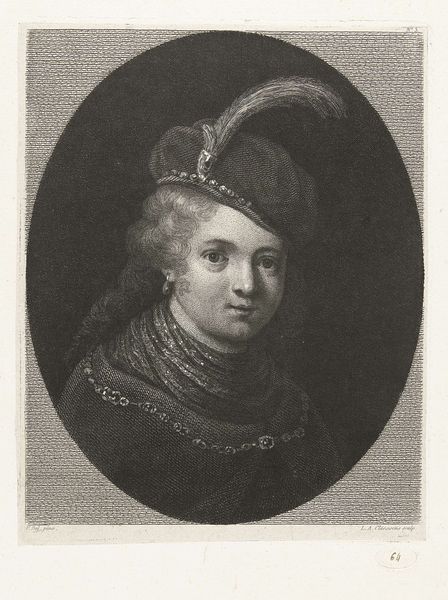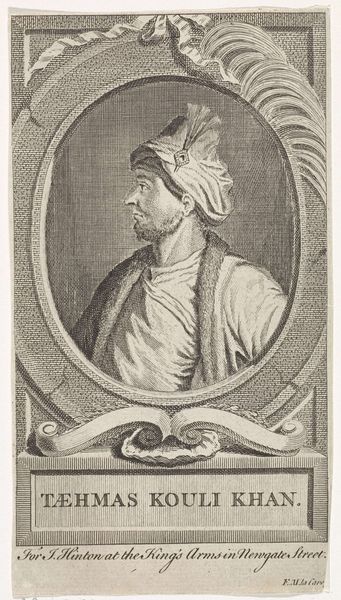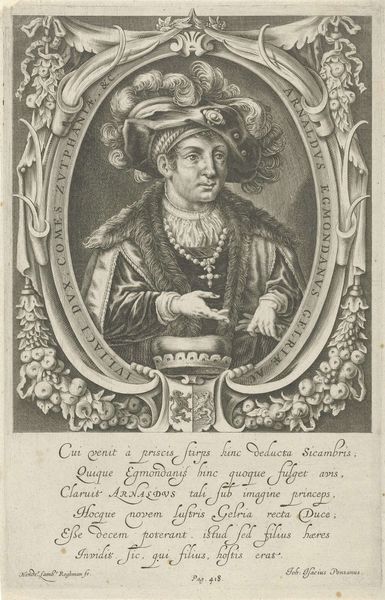
engraving
#
portrait
#
baroque
#
islamic-art
#
history-painting
#
engraving
Dimensions: height 145 mm, width 94 mm
Copyright: Rijks Museum: Open Domain
Editor: This is a portrait of Mustafa II, made between 1670 and 1725 by Michiel van der Gucht. It’s an engraving, and the detail is just incredible! It feels like a very formal depiction, but what strikes me is the European perspective on Ottoman power at the time. How do you interpret this work? Curator: Well, given my focus, I see this piece as more than just a historical portrait; it is a product of cultural exchange and power dynamics. An engraving made by a European artist of an Ottoman Sultan raises questions about representation and the Western gaze. We have to ask ourselves how the artist's own cultural context influenced his portrayal of Mustafa II. Editor: So, it’s not necessarily an objective likeness, then? Curator: Precisely. It's crucial to consider the socio-political context. What was the relationship between Europe and the Ottoman Empire at this time? This piece becomes an artifact of that relationship. What symbols were employed to represent the Ottoman Sultan to a European audience, and what underlying assumptions did they carry? His turban, his clothing--how would the contemporary European viewer read those? Editor: I never considered that! The image presents him as a powerful ruler, but I can see now how it's a very specific *kind* of portrayal of power. I'm curious, were these engravings meant to inform or to perhaps subtly promote certain political views about the Ottomans? Curator: Excellent question! This type of work often played a part in shaping European public perception of the Ottoman Empire. What seems like a straightforward portrait can actually reveal intricate cultural attitudes. So, next time, consider whose perspective we are seeing in these portraits. Editor: I definitely will. Thanks for offering a new way for me to think about such a work!
Comments
No comments
Be the first to comment and join the conversation on the ultimate creative platform.
